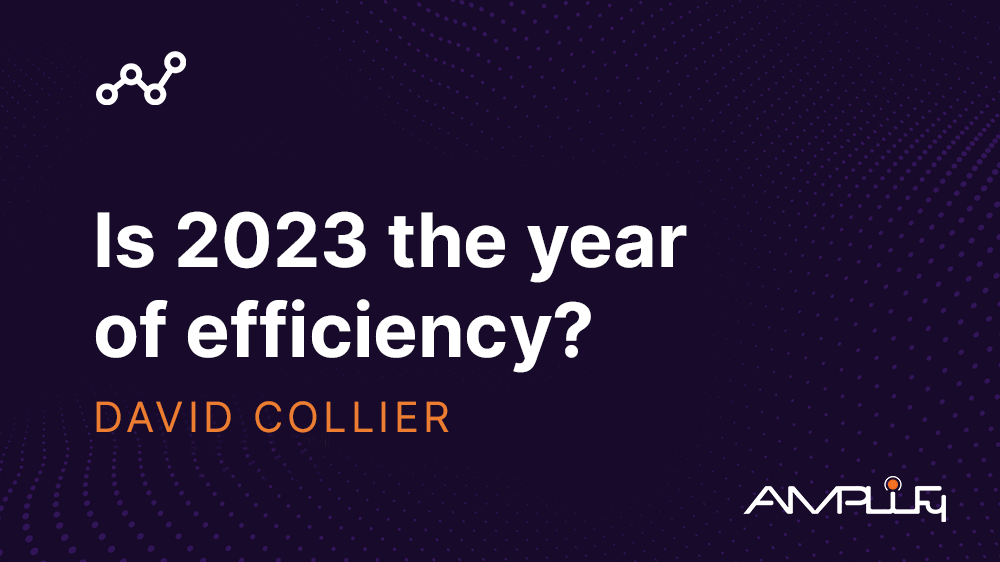Is 2023 the year of efficiency?
Earlier this year I read an interesting article where several business leaders began referring to 2023 as the “year of efficiency”. Leaders from Amazon, Apple, Ford, Meta, UPS and other companies talked through their changing businesses, consumer spending trends, AI’s impact, and future hiring plans for the year. All the while, layoffs were seemingly taking place daily at major enterprises and small businesses alike. I thought to myself… “Wow… here we go… again.”
One major factor driving this need for “efficiency” is the ongoing economic uncertainty and volatility, which has been exacerbated by the COVID-19 pandemic of the past few years. Many companies are facing increased pressure to cut costs, streamline operations, and maximize productivity to maintain profitability and remain relevant in our hyper-competitive marketplace. Combined with the fact that many companies are still recovering from the impacts of the COVID-19 pandemic (corporate Long-Covid), which has forced businesses to adapt to remote working models, continued supply chain disruptions, and other challenges. As a result, many companies have had to reassess their operations and find ways to become more efficient and agile in response to the changes in the business environment. However, it's worth noting that every company is unique, and the specific factors driving their efficiency initiatives vary.
Efficiency is also closely linked to sustainability. It is not a stretch to say that as businesses operate more efficiently, the consumption of their resources lowers, the production of waste by-product lessens, and the net result is a smaller carbon footprint and an eco-friendlier enterprise. As consumers become more environmentally conscious, businesses that prioritize sustainability through efficiencies will be positioned to become market movers in the years to come.
The accelerating pace of technological change and digital transformation is creating new opportunities for businesses to improve efficiency and optimize their operations. The widespread adoption of automation, artificial intelligence, and other advanced technologies are enabling companies to streamline processes, reduce waste, and improve their increasingly data-driven, decision-making capabilities. The challenges are often:
Where to begin? What is going to give me the largest (and quickest) return on my investment? Is my organization capable of absorbing these broad and sweeping changes in the name of “Efficiency”?
Here are a few areas where hidden efficiencies can often exist. Remember, careful due diligence and a clear understanding of your organizations processes, regulatory requirements and operating model are imperative to creating efficiencies.
CIO’s and Information Technology Executives:
- Understand your organizations tech debt inclusive of vendor landscape, services managed and business unit enablement.
- Automate where it makes sense. Account provisioning/deprovisioning, workflow, SecOps, DevOps, etc. Where are the manual processes that are weighing down the team and causing organizational bottlenecks?
- Evolve from a service provider/support model to a business partner and driver of digital transformation.
CFO’s and Financial Executives
- Identify the blackholes of time and determine root cause. Is it attributed to skills/training, over-engineered/redundant processes, lack of tools and platforms or a broader organizational issue?
- Where can standardization and automation provide the greatest value.
- Establish KPIs to baseline your performance and prioritize the laggards.
CHRO’s and Human Capital Executives
- Talent is in short supply these days. Create an engaging and inclusive onboarding experience for new hires and curate that experience throughout their employee lifecycle. Don’t be afraid of digital tools to help facilitate and manage the process.
- Approach all enterprise initiatives with the acknowledgement that people are the largest variable. Leverage change management to bring the staff on the journey to help with a successful outcome.
- Find your pain points, understand how they impact the broader organization and take steps to improve in those areas.
Of course, upsetting the apple cart on all the above is the proliferation and penetration of Generative AI in the workplace. I’ll have a separate piece on that topic in the next few weeks, stay tuned!
If 2023 truly is the year of efficiency, what are you doing to prioritize, plan and activate your high-result programs at your organization? How are you looking to optimize your operations to stay competitive and adapt to changing business and economic conditions?
If this is something you are thinking about or not seeing the results you had hoped for, I’d love to hear from you!




